More than a watch: Sony SmartWatch review

One of the most notable Sony products in 2011 was not a smartphone, but a small accessory reminiscent of the shape of a wristwatch - Sony Ericsson LiveView . The concept turned out to be successful, and in 2012 it was developed under a new name: SmartWatch - a remote control for a smartphone that looks like an ordinary wristwatch. A tiny but functional device with which you can answer calls and SMS, manage music, find your lost phone and just find out the time without taking the phone out of your pocket.
This is an accessory for Andorid smartphones, so it will be useful to read the review not only to owners of Sony Xperia, but also to all owners of smartphones on this platform. To use SmartWatch with your phone, you only need Bluetooth.
Design
The case and SmartWatch mount are made of white plastic with a silver metallic border around the perimeter.
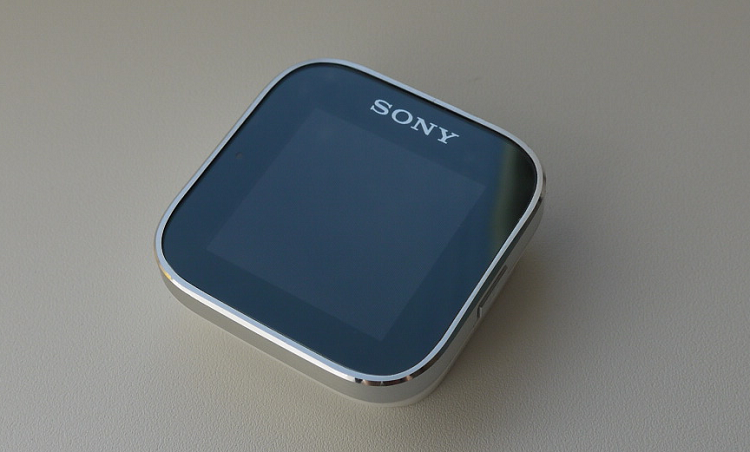
On the side is the only on / off button of the device, it is also the display lock.
At the back, in addition to a powerful clamping device relative to the dimensions, there is a connector for a charger.
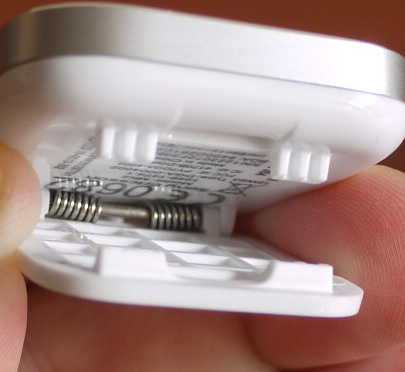

In terms of dimensions, the device has not changed much - it is still a square with sides 36x36 mm (exactly one millimeter more than LiveView), eight millimeters thick. The LiveView was thicker - as much as 11 mm, but this is cunning: the dimensions of the LiveView were considered to be without removable but necessary fasteners. And on SmartWatch, the fastener in the form of a clip is now built-in, and increases its thickness quite significantly - it is thicker, for example, Sony Xperia P (10.5 mm), if you put them next to it:

The 1.3-inch SmartWatch display has a resolution of 128x128 pixels. The device weighs 15.5 grams.
Unpacking
SmartWatch comes in a nice red-and-white box with a transparent insert, behind which it is displayed as in a window:
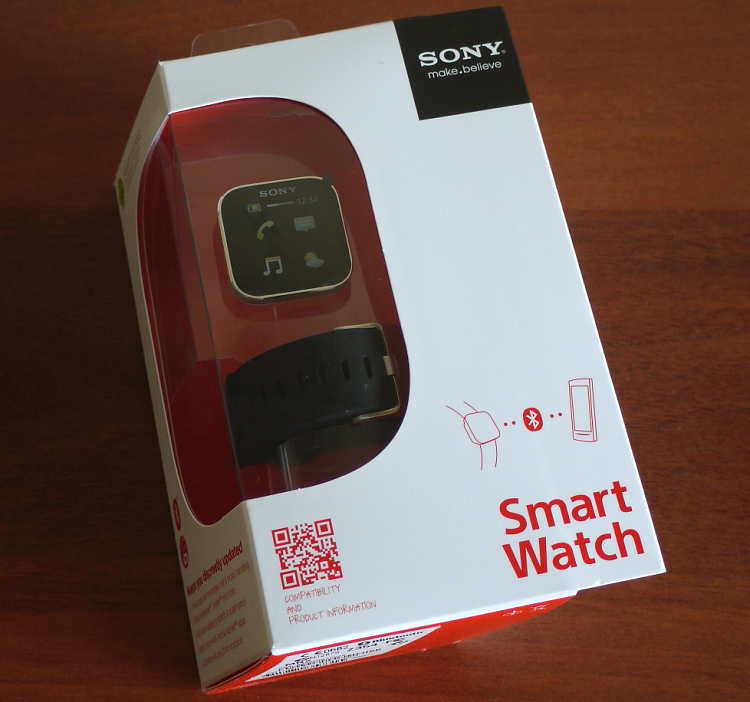
To look the most advantageous, the device is durable - it won’t move! - mounted on a transparent plastic insert - so strong that I had to cut it with scissors to remove the gadget. There, inside, there are a variety of required pieces of paper in the kit (the online version of the instructions is on the Sony Mobile website ), and in the basement of the box there is a USB-cord for charging.
Ergonomics

The built-in clip is a step forward compared to LiveView, where the clip for all wearing options and the frame for the wearing option with a strap went separately. Firstly, excess components are always hemorrhoids - either you carry them with you, or is limited in use cases. Secondly - less detail, less likely to break something.
The SmartWatch clip is implemented correctly: by default it is just a clip with which you can attach the gadget, for example, to a belt:

However, there is a rubber bracelet for SmartWatch that is molded so that it fits perfectly on the mount:

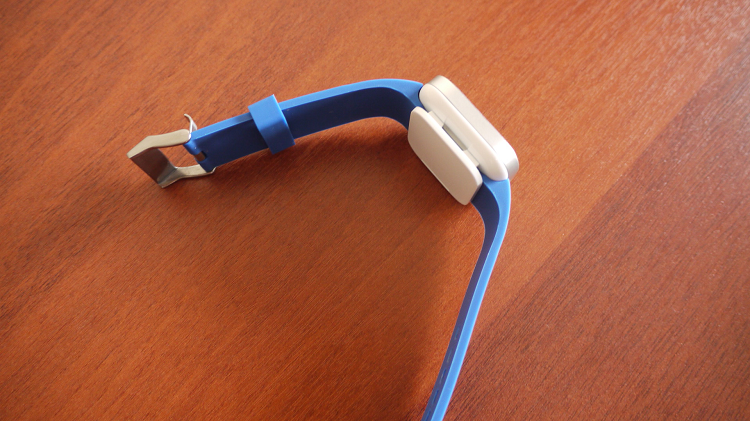
A black strap comes with SmartWatch, but separately you can buy something brighter - blue (as in the photo) for boys, pink for girls, as well as blue, gray, white, etc. ( 390 rubles)
Of course, not everyone may like a rubber bracelet, therefore, a silver metal adapter comes with SmartWatch - a kind of adapter with which you can use any 20-mm straps.


Unlike a rubber bracelet, the adapter slightly backlash if you twist it in your hands, but in a "fighting position", ie on the wrist, it is not felt at all.
The same clip is also used to clamp the charger - unlike LiveView, the SmartWatch has a proprietary power connector and, accordingly, a special cord. On LiveView, I recall, there was a microUSB connector, which made it fully compatible with adapters from any Android smartphone. The non-standard SmartWatch connector allows you to save millimeters of dimensions that are precious for such a tiny device - but, of course, a separate cord is a minus. However, he holds the battery well, so just keep the cord at home and recharge SmartWatch every 3-4 days.
First inclusion
When you turn on SmartWatch immediately begins to look for "mom" - the device with which it will be paired. Therefore, on the smartphone you need to enable Bluetooth and visibility mode. If it is detected, a PIN code will appear on the SmartWatch screen, which should also be displayed on the smartphone screen so that you do not accidentally join any other phone.
To control SmartWatch, you will need two applications: LiveWare Manager from Google Play:
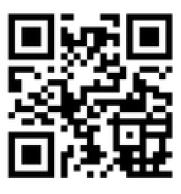
And actually SmartWatch. The first application is the manager of the devices used with the smartphone. On all Sony Xperia smartphones, it is preinstalled by default, so only owners of smartphones of other brands will need to install it. The second application is designed specifically for controlling SmartWatch. It does not open as a standalone application, and, in fact, is simply an extension of LiveWare Manager.
After the SmartWatch is paired with a smartphone, we go to the LiveWare manager.
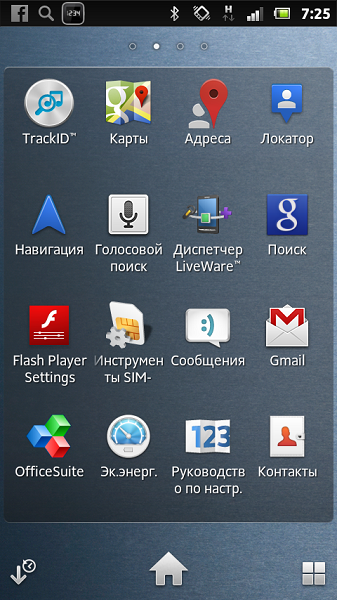

In the SmartWatch settings, several basic applications are offered - calls, messages, player, weather, etc., which can be installed right away from Google Play.
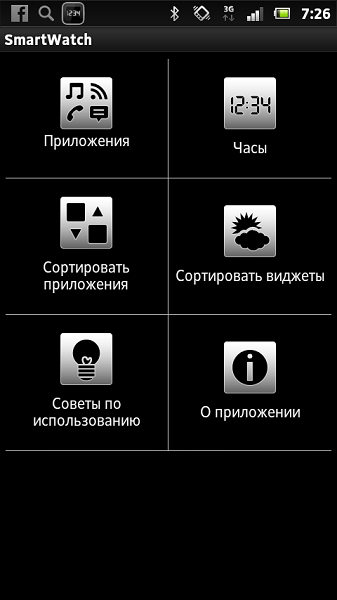

The “Search for applications” button leads to the issuance of all existing applications for SmartWatch. The choice there is now from several dozen applications of Sony Mobile Communications and third-party development. However, I did not find, for example, a radio control application there, which made me very upset.
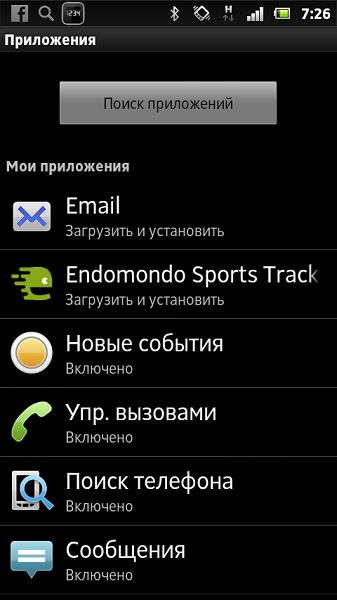
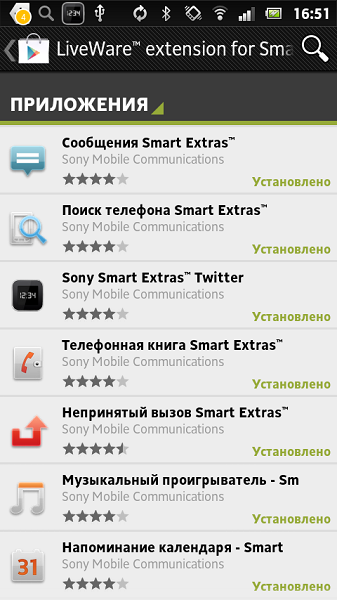
Having returned back to the dispatcher, you can configure the installed applications: for example, specify the city for the weather widget, link Twitter, Gmail or Facebook accounts, set / unset widgets on the SmartWatch screen.
Interface
A key innovation of the SmartWatch interface is that now 4 icons of installed applications or one widget get on the screen. Now it’s hard to imagine how it used to be on LiveView with just one application per screen.
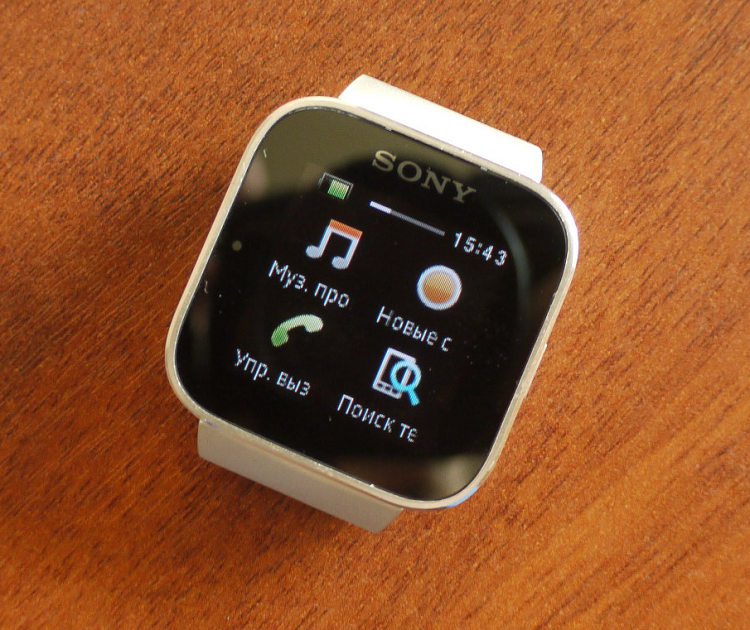
The interface management has also changed - now it is done using a multitouch-enabled touch screen. Using vertical scrolling, you can move between lists of widgets and applications. Navigating the list itself is accomplished by horizontal scrolling. Everything, in general, is quite logical and intuitive. I didn’t just like that the desktops are not looped back - when you scroll through the screens, for example, widgets, to the end, they “end” and you have to wind back - instead of going directly to the first screen. The numbering of the screens is not displayed, yes, probably, it is not needed.
Unlocking the screen is either a button or a double tap on it. This, by the way, is one of the most touching and convenient SmartWatch interface chips - in the end, in principle, I have never used a button for the entire period of operation since the device was turned on.
From the side, double tapping on the display looks like a classic, now a little forgotten, gesture of the watch owners. When I tapped the SmartWatch display to unlock it, I felt something like this:

The application interface is functional enough to perform the basic actions: receive / reset calls, answer a dropped call / incoming SMS with a given pattern, or control the player. The latter allows you to switch tracks and change the volume. This is more convenient than the remote control on the headset, for example:

Actually, since most of the time I use the phone specifically as a player, I mainly used SmartWatch to control it. And happy as an elephant - it's really very convenient.
In the locked version, SmartWatch is just a backlit watch, and in the LiveWare settings you can choose the option to display the clock on the screen:
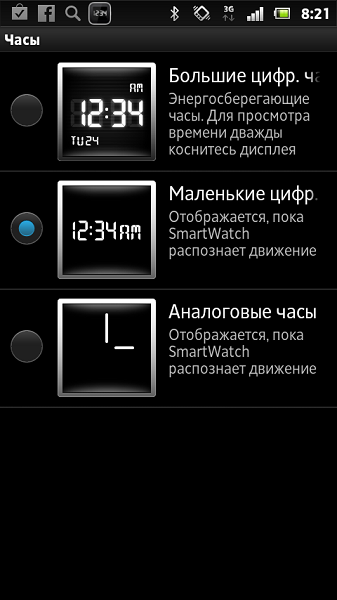
- And on Google Play there are several custom watch options for SmartWatch.
Returning to a higher level is done by bringing two fingers together.
Summary
SmartWatch is a sure step on the way from a fun toy to a must have gadget. For me, in just a couple of hours, it became indispensable for controlling music on the phone; answer calls (if you use a Smart HeadSet or a Bluetooth headset with a microphone) or watch who received another SMS with it faster and easier than using the phone itself.
The hardkey buttons of various headsets give more effective pressing than the touch screen, but their minus is that they are “blind”, and the very arrangement of the buttons is less convenient - you almost always have to reach for them. Purely physiologically, the location on the wrist clearly wins.
SmartWatch is compatible with all Sony and Sony Ericsson Android models of the last two years, starting with X8 and X10, as well as with a large number of popular smartphones of other brands running Android 2.1 and higher:
• HTC Desire S, HTC Wildfire, HTC Wildfire S
• Motorola Defy, Motorola Droid 2 / Milestone 2, Motorola RAZR
• Orange San Francisco
• Samsung Galaxy 5, Samsung Galaxy Ace, Samsung Galaxy Fit, Samsung Galaxy Gio, Samsung Galaxy Mini, Samsung Galaxy S II, Samsung Galaxy SL
- full compatibility list is available look at the link .
SmartyWatch costs a little less than four thousand rubles. Perhaps this, too, can be written down as flaws. No other minuses were found in the device. So, the final layout turns out like this:
 Wrist wearing
Wrist wearing  Weight and dimensions
Weight and dimensions  Functionality
Functionality  Proprietary charging
Proprietary charging  High price
High price However, all the minuses and pluses are overlapped by the fact that SmartWatch remains a unique device of its kind. A thing in itself.
